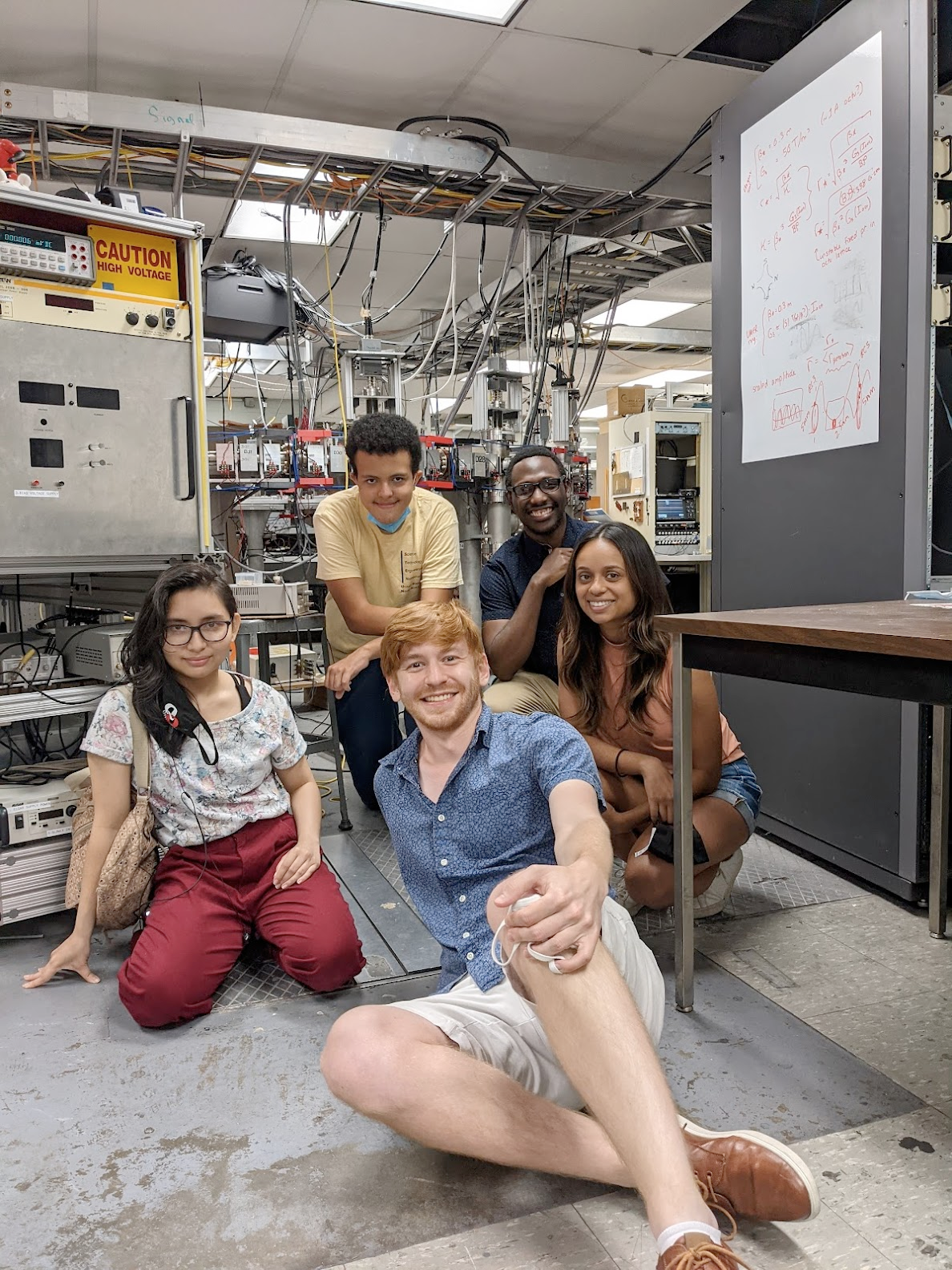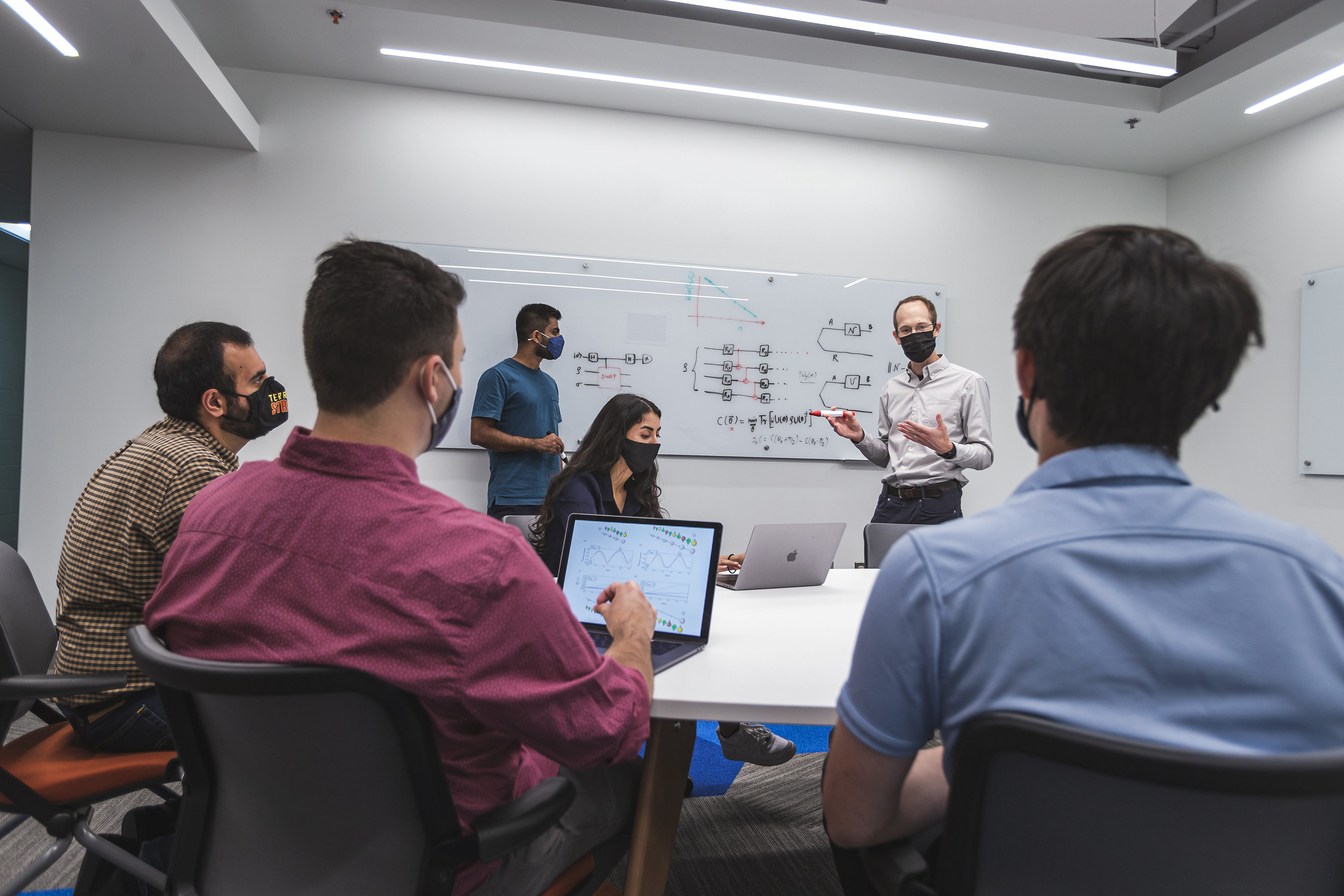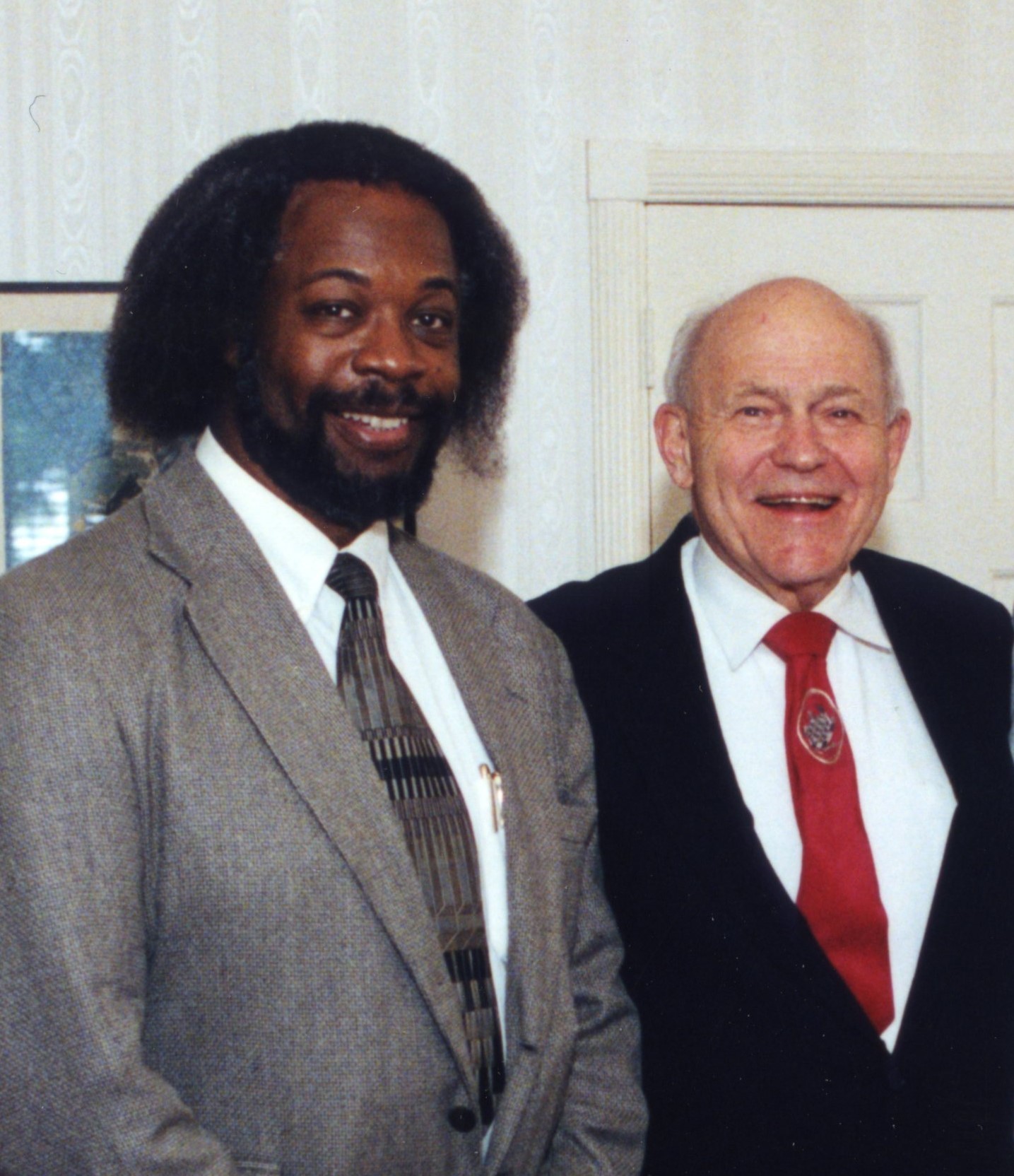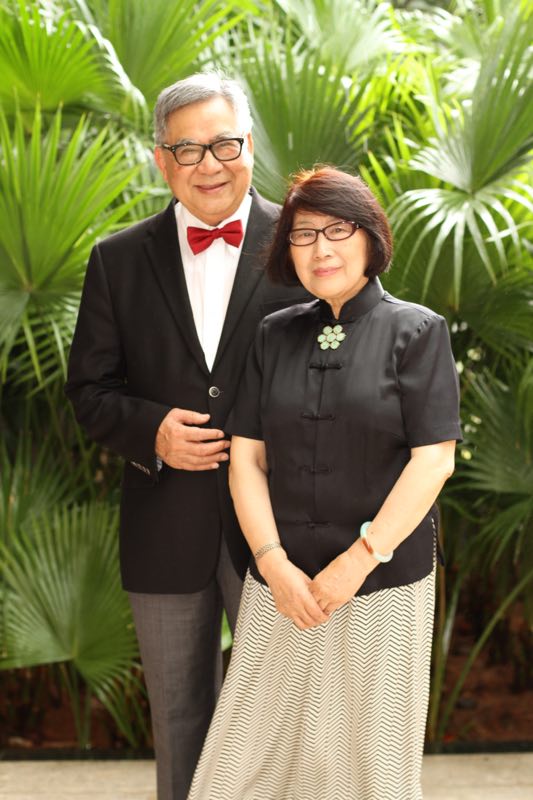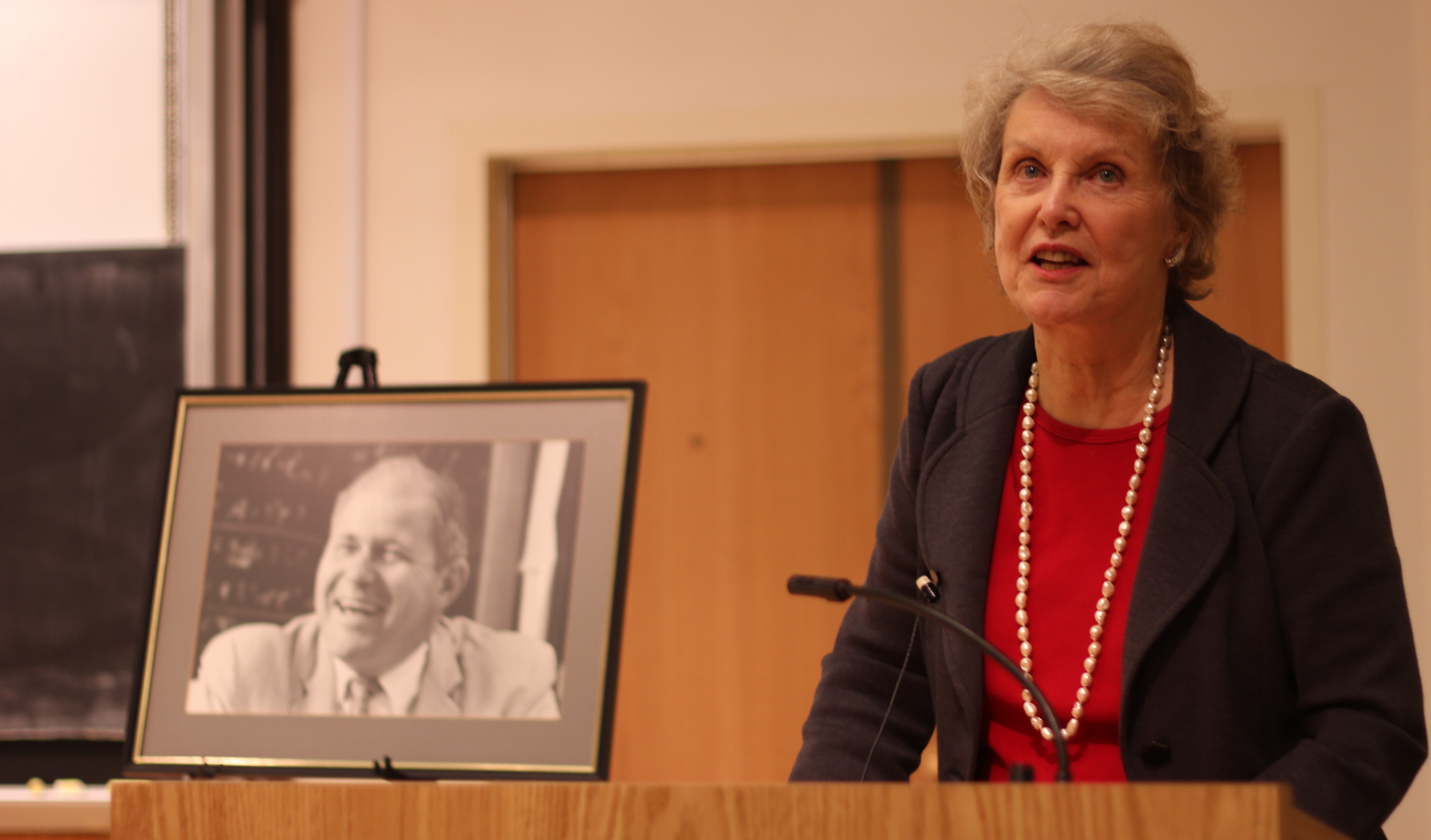Elevating the Humble Neutrino
- Details
- Category: Department News
- Published: Friday, September 03 2021 00:11
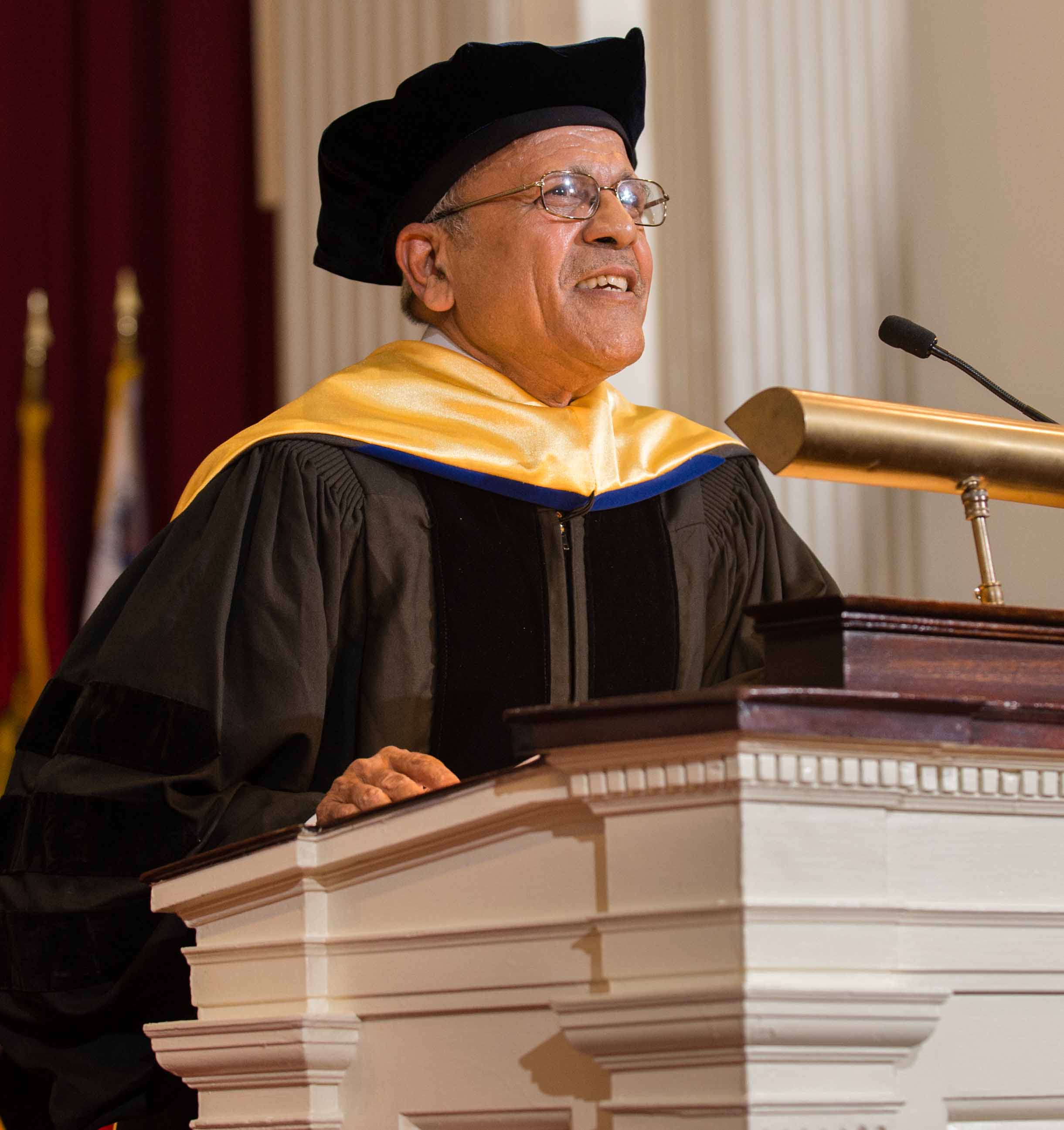 Rabi Mohapatra at the 2016 campus convocation
Rabi Mohapatra at the 2016 campus convocationRabindra Mohapatra wants “neutrino” to be a household word.
“This is a very fascinating particle,” he said. “Neutrinos are so tiny, there are billions of them passing through us every second, and they interact so weakly, we even can’t tell. But the neutrino is pretty much responsible for creating the whole universe, everything we see has an imprint of the neutrino.”
Mohapatra, a Distinguished University Professor of Physics at the University of Maryland, has been theorizing the origins and mass of neutrinos for 40 years. Last fall, he published a book targeted toward non-scientists called “The Neutrino Story: One Tiny Particle’s Grand Role in the Cosmos.”
As a theoretical physicist, Mohapatra proposes mathematical explanations for how the universe works, specifically how the tiny particles that make up the universe and the forces that control them interact to create all the matter we can see—and even the dark matter we can’t see. It may seem like heady stuff for a village boy from India, but Mohapatra’s path followed a logical trajectory for someone in his shoes.
“I was always interested in science, from the very beginning,” he recalled. “But we didn’t have too many instruments to work with in my school, so experimental physics was not the way I could go to explore my interests. Mostly then, my interests became theory based, and I studied math and science books.”
Mohapatra was especially inspired by popular science books like “One Two Three . . . Infinity,” which was written by Russian theoretical physicist and cosmologist George Gamow, who helped develop the Big Bang theory.
“One of the things that inspired me quite a bit from Gamow’s books and other popular science books was learning that something so abstract as mathematical formula could be connected to the simple things we observe,” Mohapatra said. “And my father sort of pushed me in that direction, too, because he was very interested in math. In fact, my father had gone to college, which was quite an amazing thing in the 1930s.”
The younger Mohapatra earned his bachelor's degree in physics in 1964 from Utkal University in Bhubaneswar, India, and his master's degree in physics at the University of Delhi in 1966. The same year, he traveled around the globe to New York where he earned his Ph.D. in physics at the University of Rochester in 1969.
After completing postdoctoral fellowships at Stony Brook University and UMD, Mohapatra joined the physics faculty at City University of New York. In 1983, he returned to the Department of Physics at UMD as a professor, and he has been here ever since.
Over his career, Mohapatra has traveled the world for conferences and talks. He accepted multiple visiting professorships at institutions like the Max Planck Institute for Physics and the Technical University of Munich in Germany, CERN in Switzerland, and Los Alamos National Laboratory and Brookhaven National Laboratory in the U.S.
Mohapatra is known throughout the world for his seminal theories on neutrino masses, which include support for new particles and a unifying theory that governs the behavior of all matter in the universe. Along the way, he has published 450 peer-reviewed research papers and received numerous awards such as the Distinguished Scientist Award from the American chapter of the Indian Physics Association in 2000 and the prestigious Humboldt Prize in 2005.
At UMD, Mohapatra was awarded a Distinguished Faculty Research Fellowship in 1995-96 and was named a Distinguished Scholar-Teacher in 2000. In 2016, he was honored with the title Distinguished University Professor, the highest academic honor bestowed by the university.
And yet, Mohapatra says some of his proudest accomplishments are those in which he passed on his passion and expertise to young scientists.
“I feel fortunate to have worked with them,” he said of the 25 Ph.D. students he mentored at the City University of New York and UMD. “They have been really inspiring. Many of them are now faculty members at universities all around the world, and that’s one of the most satisfying things about my career.”
Although Ph.D. students invigorate Mohapatra’s scientific mind, he also finds joy in sharing his enthusiasm with students who come to him with no knowledge of his field. This joy drives him to teach large introductory physics lecture courses.
“They’re usually a lot of work because they’re such large classes,” he said. “I like to teach them because it’s a way to communicate with younger people who have some of the most interesting ideas. I try to sneak in some of these higher concepts and get them thinking about these things, and hopefully some of them grab on to it.”
That same desire to reach a broader audience is what motivated him to write his latest book as well. Mohapatra had already written a textbook on supersymmetry and co-authored another on neutrino masses, which have both gone on to third edition printing. But he was encouraged by his wife to write a book that would inspire science enthusiasts in high school or college to appreciate the beauty and significance of neutrinos.
But it was a challenge. The seminal theories Mohapatra is most known for and spends much of his time working on can be a little mind-bending to the average person.
In his theories of left-right symmetry, for instance, Mohapatra tackles a long-standing question about why certain particles only appear to have one of two known presentations in certain circumstances. The presentation in question is known as right- or left-handedness and refers to the direction in which a particle spins relative to the direction it is moving.
For example, if you make a “thumbs up” gesture, in which your hand is a particle, your thumb indicates the direction the particle travels, and the curl of your fingers indicates the direction the particle spins. A right-handed “thumbs-up” is the mirror image of a left-handed one. And for some unknown reason, physicists only see left-handed neutrinos.
Where it gets complicated is in the search for the left-handed neutrino’s anti-matter particle. Every elementary particle has an anti-particle that has the same mass and spin but opposite charge (or in the case of neutrinos, which are electromagnetically neutral, the anti-particle has an opposing lepton number.)
Scientists have yet to observe a left-handed anti-neutrino, the counter particle to the left-handed neutrinos they’ve seen. However, they observed anti-neutrinos, but they’re all right-handed. This breaks the mirror symmetry of nature, but Mohapatra believes the problem is a matter of scale. He hypothesizes that all particles, including right-handed neutrinos and left-handed anti-neutrinos, do exist in nature. We just can’t see the right-handed neutrinos now because they are very heavy and show up at a higher energy scale.
“Meaning, at some higher energy scale, everything has symmetry between left and right, but when we come to the scale we can observe and we do an experiment involving the neutrino, things look only one-sided, where we only see the left side and not the right,” he said.
Experimentalists have been working on testing these theories, and their observation of neutrino mass provides some indications that Mohapatra could be correct.
Another one of Mohapatra’s ideas that experimental physicists are working hard to understand is called the seesaw mechanism for explaining neutrino mass.
Physicists have long pondered how neutrinos can have so little mass. (They are a billion times lighter than protons.) Mohapatra proposed that the right-handed neutrino that has yet to be observed acts as the right-handed neutrino’s heavy, unseen partner.
“It’s a bit like a seesaw on the playground,” he said. “When one child goes up, it is because another heavier child is sitting on the other side. So, the idea is that if there is the heavy right-handed neutrino sitting on the other side of the world in some sense, then this particle, the neutrino we see, becomes light. It’s not a very clear explanation but that’s probably the best one can do.”
Of course, that may be all one can do in a sentence. Mohapatra draws a clearer picture of the seesaw mechanism in his new book, which hit the shelves in November 2020. By September 2021, it was already selling well as Amazon reported just 10 left in stock, with more in print. That’s not a bad start for someone on a quest to make “neutrino” a household word.
Written by Kimbra Cutlip
